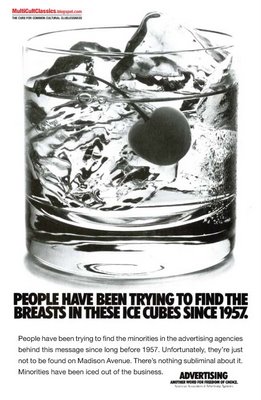
Sorry stories in a MultiCultClassics Monologue…
• In Richmond, Virginia, a slavery memorial was unveiled on Friday. A bronze sculpture of hugging figures is encircled by three benches resembling wooden ship planks, while a nearby deck spans a fountain designed to symbolize the Atlantic crossing made by Africans. “Virginia was not an innocent bystander in the matter of slavery,” said Gov. Timothy Kaine. “Some expression of apology or regret is natural.” So please accept this memorial in lieu of reparations.
• Circuit City is offering no apologies about firing its slaves, um, workers. On Wednesday, the retailer proceeded to cut 3,600 employees, announcing the company was dumping higher-paid folks and replacing them with cheaper laborers. The higher-paid employees were even being told they could be rehired at lower wages. So now customers can look to find cheap products and cheap sales help too.
• A study by the Washington-based National Community Reinvestment Coalition revealed most U.S. cities have a lot less bank branches in working-class and minority areas than in upper-class and White neighborhoods. “Home loans that originate at bank branches, rather than through brokers or other channels, tend to have a lower likelihood of being high-cost,” said the coalition, citing a Federal Reserve study. “If banks increase their branches in minority and working-class neighborhoods, it is likely that community residents will have more access to affordable and market-rate home loans.” So you can take that to the bank. Unless you live in working-class or minority communities.
• The University of Illinois alerted retailers that Chief Illiniwek merchandise will no longer be available after April 16; plus, all remaining stock must be sold by June 15. Guess you could call it a “Going Out of Bigotry Sale.”

















































